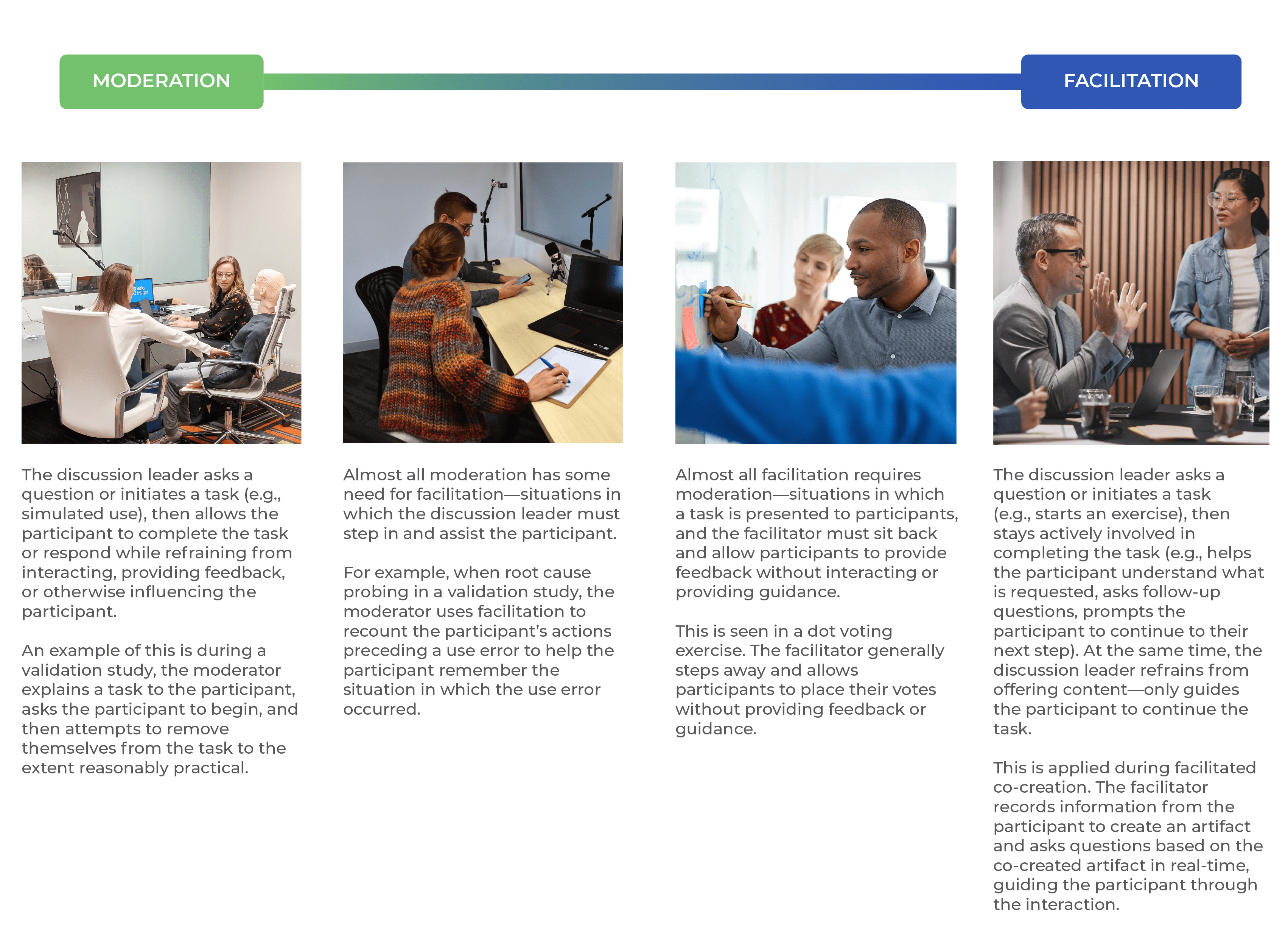While moderation and facilitation for user experience (UX) research are similar in their goal of gathering unbiased data from participants, they differ in implementation. Understanding the differences and developing your skills to navigate between them gives you more tools to use and can help you feel comfortable in a broader range of research contexts.
What is the difference between moderation and facilitation?
The primary difference between moderation and facilitation is the level of involvement and collaboration between the discussion leader and participant. In both moderation and facilitation, a discussion leader prompts a participant with tasks or questions throughout the session. The difference lies in what happens after that prompt. A moderator’s goal after a prompt is to stay out of the way, to allow the participant(s) to respond independently without moderator involvement. In comparison, a facilitator stays involved in the process after a prompt, to guide the participant(s) to provide useful information to achieve study objectives.
Moderation and facilitation exist on a continuum
The type of study, method, and objectives will determine what style or mix of styles is required.

The role of a facilitator
Being a good facilitator requires the skills of a moderator plus some additional skills. A facilitator works side-by-side with the participant in a collaborative process to gather data. This collaboration focuses on guiding a participant through the process of generating information; a facilitator must refrain from influencing the content of the information shared by the participant. This higher level of interaction compared to moderation is essential to data collection.
There are a few notable areas where a facilitator’s role differs from most styles of moderation. A facilitator:
- Creates a supportive and encouraging environment
- Performs a more active and collaborative role
- Guides the participant through activities and discussions using an outline for the session
- Creates more questions in the moment than many styles of moderation since facilitation is more loosely scripted
- Manages a more flexible session that follows the flow of the conversation
- Has the freedom to shift the interview in another direction as the same path and questions may not be required across all sessions
When should we use moderation vs. facilitation?
Although we have described a continuum from moderation to facilitation, that is not how we typically use those terms. We often use the term moderation for any study where a discussion lead asks the participant questions and allows the participant to respond. We generally reserve the term facilitation for studies where the discussion lead guides participants through a task or an activity.
Facilitation is best suited for exploratory and generative research, where the session structure is more flexible to follow the conversation to gather data. A facilitator can gather rich data using activities like brainstorming, co-creation, design thinking workshops, or journey mapping.
While moderation can be used for any study, it is necessary for structured, evaluative studies with strict protocols to maintain consistency across sessions, such as usability tests and validation studies. Moderation is also frequently used in formative and some exploratory studies.
A mix of moderation and facilitation may be used in any given study. As you get closer to either end of the moderation/facilitation continuum, these approaches best suit different projects and methods. Building your skills in both areas will make you more flexible and capable of handling a wider set of challenges as a discussion lead.
At Bold Insight, we tailor our approach to each project by balancing moderation and facilitation to suit your unique research needs. Want to explore how we can help with your next study? Let’s talk! [email protected]
